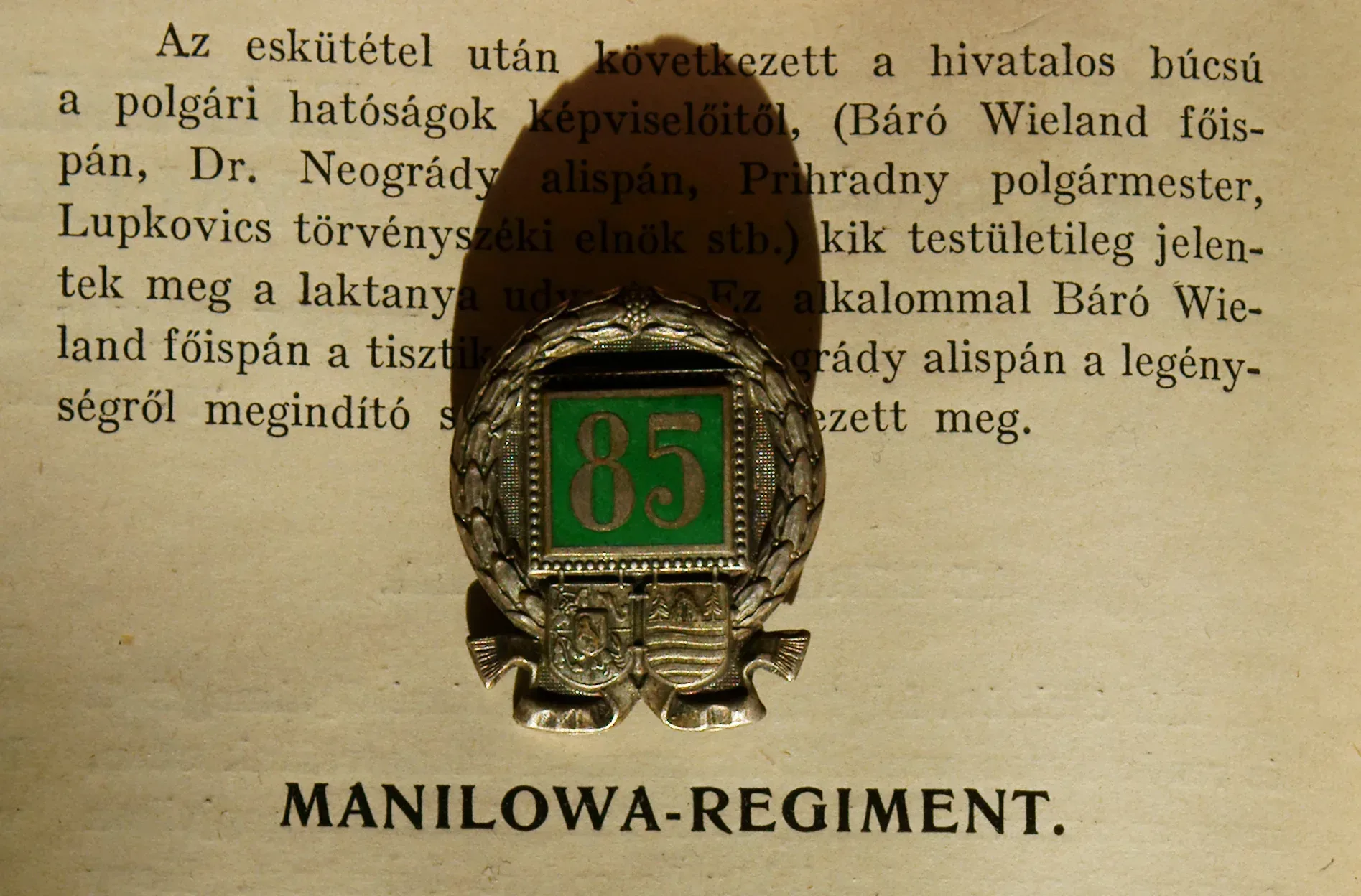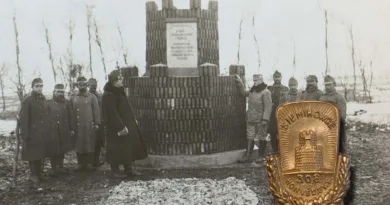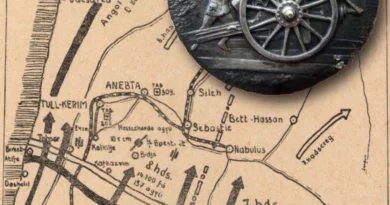February, 1915
The way of the Austro-Hungarian forces seeking to liberate the fortress of Przemysl, was hampered by natural obstacles in the mountainous terrain and by inclement weather, in addition to the resistance of outnumbered Russian troops. Traffic on the driveway in the Valley of Jablonka Creek of the Carpathians was hampered by Russian artillery and machine gun nests dug into the mountains that towered by the roadside. In order to move forward, it was necessary to occupy the high ground and, above all, to take possession of the two peaks of Mount Manilowa. To take the mountain, three infantry divisions were mobilized. With huge losses, the attacks, which began in mid-February, resulted in the capture of the southeastern peak. On 12 March they also managed to capture the northwestern high ground. Heavy fighting and harsh winter weather have claimed many lives. The 85th Infantry Regiment of the 27th Division (from Máramaros and Ung Counties) was then called the “Manilova Regiment”. The camp newspaper of the regiment was also named after the mountain.
The 85th Regiment was ordered on February 27 to attack the Russians at the south-eastern tip of the mountain. The slightly steep, densely overgrown hillside made it difficult to get ahead, but it could not prevent it. The great silence at the moment of the attack was broken by a short but franticly strong firing from above. The 85-ers came close to the enemy, and became exposed to infantry fire. Colonel Balling himself lead his men, and when the Russian positions became visible, he gave the order to fire. The Russians were surprised by the well-aimed and excellently guided firing, because they suddenly fell silent. This momentary break was used by Lieutenant Seiser and he went on attacking with his company. Soon, after a fierce hand-to-hand attack, the Russians were lifted from their trenches. The short fight resulted in 130 POWs and 3 captured machine guns.
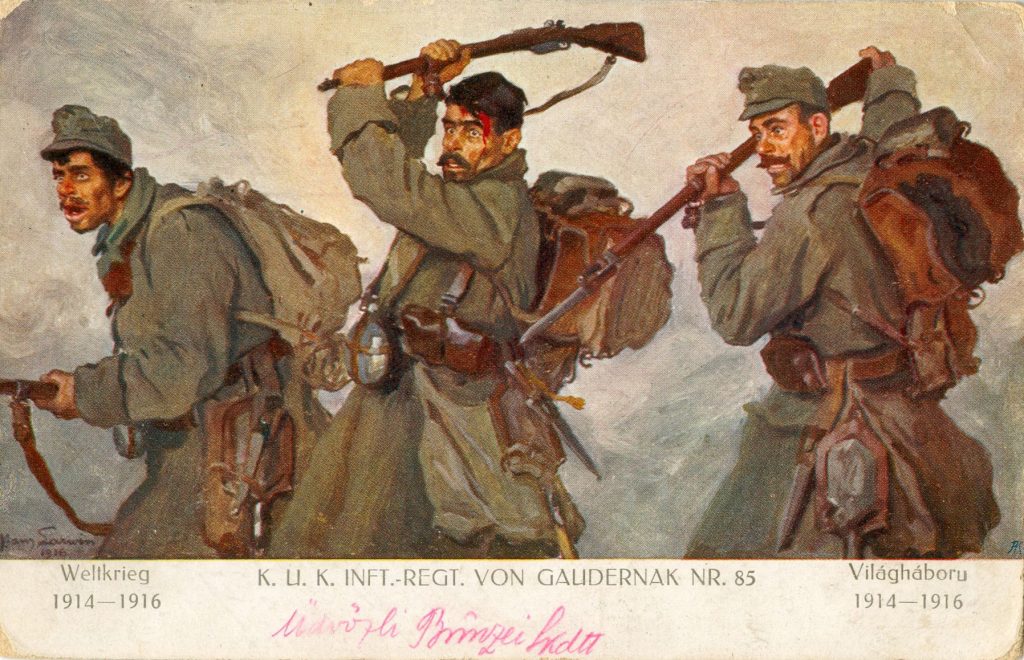
The terrain continued here in a saddle-like way, and at the end of it the Manilowa peak rose, the side of which was very steep. The main defense line of the Russians was at this summit, which ruled over the entire area. The place where the advance should have continued was quite flat, without any natural or artificial cover. The task of the 1st Battalion, under the command of Captain Moga, was to take the summit from the West, while the Seiser company kept the Russian positions in Manilowa under fire with machine guns. Meanwhile, the 2nd Battalion attacked on the eastern side of Manilowa. The Móga Battalion’s swarm line was about 100 to 120 steps from the enemy when it started to fire with machine guns. About 20 steps away from the enemy the attack was simultaneously halted. Carrying the heavy outfit and weapons in the deep snow, obstructed by bushes and trunks, subjected to the terrible firing of the enemy, was a strenuous task. At that time, Captain Móga personally took charge of the stormtroopers. In some places, the enemy fired at the attackers even from 5 to 6 steps, but when they reached the trenches, they surrendered.”
The occupied mountain peak was held for days by the 85th Infantry, losing 33 officers and 1,803 crew members. Captain Móga, commander of the battalion mentioned in the text, was awarded the Military Maria-Theresa Order in August 1918, along with Colonel Balling, who also died in the attack. On the basis of the proposal, Móga was awarded a posthumous officer’s gold medal of valor.
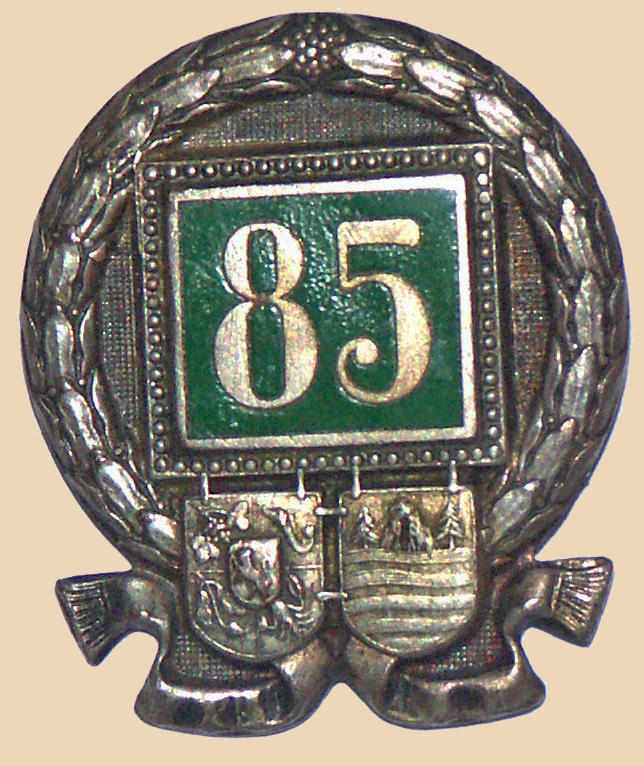
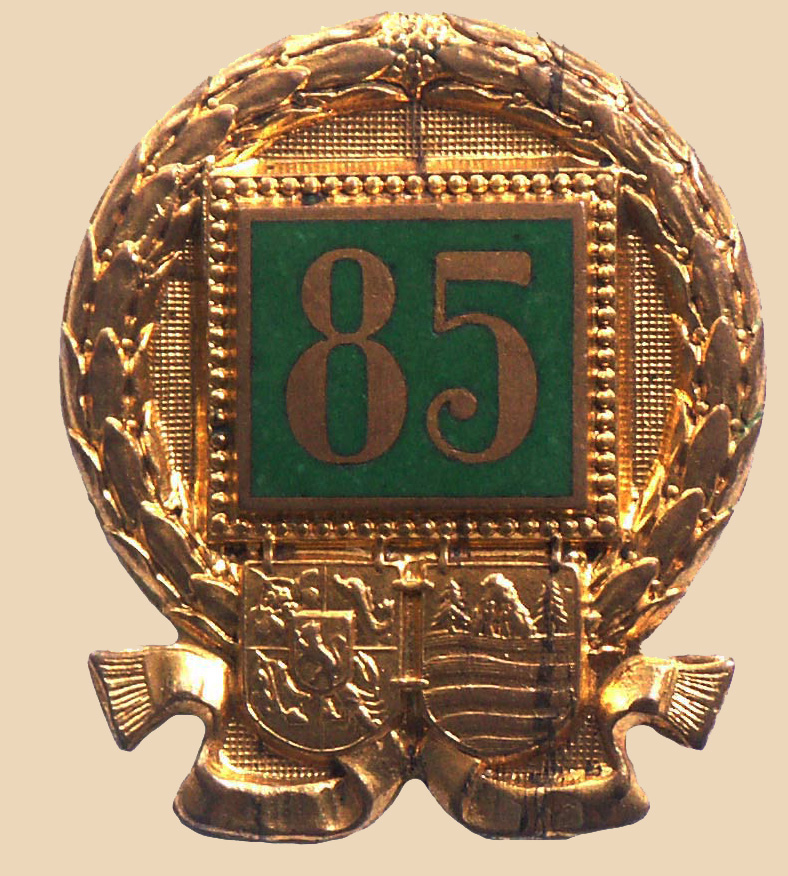
In the middle of the clean, beautiful badge of the 85th Infantry, the regiment number was placed on a green base equal to the lapel color of the regiment. Below is the coats of arms of the two counties: Ung and Máramaros Counties from where the staff was recruited.

